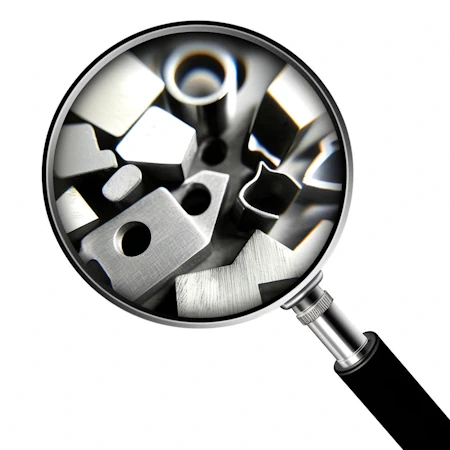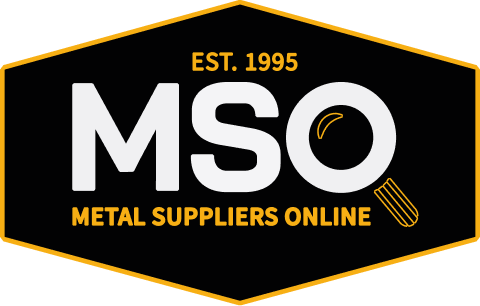Back To Browse
Super Alloy
Super Alloy Duplex Alloy 255
Annealing Procedure
Anneal at 1900 F and rapid cool.
Applications
Applications include chemical process equipment in which chlorides or phosphoric acid are encountered. The good erosion resistance of the alloy also make it suitable for pumps and valves handling hot slurries that may be abrasive as well as corrosive.
Cold Workability
This is a ductile alloy, similar to the stainless steels but stiffer, and it is readily cold worked by conventional means. An anneal must be done following cold work to restore corrosion resistance.
Forgeability
Forging may be done in the range of 2220 F to 1700 F. A re-anneal must be done following forging in order to regain optimum corrosion resistance.
Formability
Alloy 255 can be successfully formed using all common methods of hot or cold working.
Hardening Procedure
Hardens by cold work only, but should be used in annealed condition for corrosion resistance.
Heat Treatability
The alloy responds to annealing, but is not age-hardenable.
Hot Workability
See "Forging".
Machinability
Although substantially harder than most other stainless steels, Alloy 255 can be successfully machined using most common methods. Slow speeds and heavy, constant feeds are required to overcome this alloys' tendency to work harden.
Principle Design Features
This alloy, commonly known as Ferralium Alloy 255, is essentially an enriched stainless steel of chromium-iron-nickel. It has good chemical corrosion resistance as well as being erosion resistant.
Weldability
Alloy 255 can be successfully welded using most common methods, including GTAW, GMAW and SMAW procedures. When filler metal is required, for joining with a dissimilar of higher alloy content, select the filler corresponding to the higher alloy material for best results.
Known Forms
Bar-Hollow
Casting-Centrifugal
Flanges
Flat Bar
Foil
Forgings-Discs
Hexagon Bar
Open Die Forgings
Pipe-Seamless
Pipe-Welded
Plate
Round Bar
Round Bar - Precision Ground
Seamless Rolled Rings
Sheet
Sheet-Perforated
Shim Stock
Square Bar
Strip
Tube-Rectangular
Tube-Round (Seamless)
Tube-Round (Welded)
Tube-Square
Wire-Round
Wire-Welding
Billet
Coil
Contour Rings
Fasteners
Fittings
Ingot
Mandrel Rings
Shafts
Shapes-CD
Shapes-Extruded
Shapes-HR
Welded Rings
Additional Data
Specifications
A240,A479,A789,A790,A815,S39255Dismiss
Chemical Elements
| Carbon | 0.04 max |
| Chromium | 24 - 27 |
| Copper | 1.5 - 2.5 |
| Iron | Balance |
| Manganese | 1.5 max |
| Molybdenum | 2.9 - 3.9 |
| Nickel | 4.5 - 6.5 |
| Nitrogen | 0.1 - 0.25 |
| Phosphorus | 0.04 max |
| Silicon | 1 max |
| Sulphur | 0.03 max |
Physical Properties
Density: 0.282lb/in³
Electrical Resistivity: 506µΩ·cm
Melting Point: 2550°F
Relative Magnetic Permeability: 3.5μᵣ
Specific Gravity: 7.81
Specific Heat: 0.113BTU/lb·°F
Thermal Expansion: 6.6µin/in·°F
Mechanical Properties
Modulus of Elasticity – Tension: 30.5MSI
Thermal Conductivity
| Condition | Temperature | Conductivity |
|---|---|---|
| Annealed | 70 °F | 9.4 W/m·K |
| Annealed | 200 °F | 10.5 W/m·K |
| Annealed | 600 °F | 13.4 W/m·K |
| Annealed | 900 °F | 15.5 W/m·K |
Thermal Expansion
| Condition | Min | Max | Expansion Coefficient |
|---|---|---|---|
| Annealed | 70 °F | 212 °F | 6.6 µin/in/°F |
| Annealed | 70 °F | 390 °F | 7 µin/in/°F |
| Annealed | 70 °F | 932 °F | 7.6 µin/in/°F |
Mechanical Test Data
| Form | Sheet |
| Condition | Solution Heat Treated |
| Measurement Temperature | 70°F |
| Elongation | 24% |
| Rockwell Hardness | C26HRX |
| Tensile Strength | 129KSI |
| Yield Strength | 99KSI |
| Form | Plate |
| Condition | Solution Heat Treated |
| Measurement Temperature | 70°F |
| Elongation | 26% |
| Rockwell Hardness | C27HRX |
| Tensile Strength | 129KSI |
| Yield Strength | 99KSI |
| Form | Plate |
| Condition | Solution Heat Treated |
| Measurement Temperature | 200°F |
| Elongation | 29% |
| Tensile Strength | 114KSI |
| Yield Strength | 88KSI |
| Form | Plate |
| Condition | Solution Heat Treated |
| Measurement Temperature | 400°F |
| Elongation | 30% |
| Tensile Strength | 110KSI |
| Yield Strength | 80KSI |
| Form | Plate |
| Condition | Solution Heat Treated |
| Measurement Temperature | 600°F |
| Elongation | 31% |
| Tensile Strength | 105KSI |
| Yield Strength | 76KSI |
Find the metal you're looking for today.

